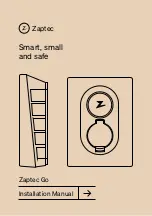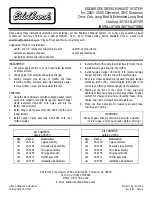
−
−
The maximum
allowable weight of the vehicle, all
occupants, all cargo and the tongue
load is 5,787 lbs (2,630 kg).
The best way to confirm that all
loads are within limits is to check
them at a public scale.
To help ensure a safe drive to a scale,
or if you cannot get to a public scale,
we recommend that you estimate
your total trailer weight and tongue
load as described next.
Add the weight of your trailer (as
quoted by the manufacturer) with
everything in or on the trailer. Then
check the tables on page
that
you do not exceed the limit for your
conditions.
Park the vehicle on level ground.
Measure and record the distance
from the ground to the bottom of
the trailer hitch.
Connect the fully loaded trailer to
the hitch.
Measure again from the ground to
the same spot on the bottom of the
hitch.
Subtract the second measurement
from the first measurement, then
refer to the following table.
If the
difference is:
1 ½’’
2 ¼’’
3’’
3 ¾’’
If the difference is more than 3 ¾’’
inch, you have too much load on the
tongue. Redistribute the load or
remove cargo as needed.
Estimated
tongue load is:
150 lbs (68 kg)
250 lbs (114 kg)
350 lbs (159 kg)
450 lbs (205 kg)
The maximum
allowable weight on the vehicle axles
are 2,888 lbs (1,310 kg) on the front
axle, and 2,992 lbs (1,360 kg) on the
rear axle.
The maximum allowable weight of
the fully loaded vehicle and trailer is
9,584 lbs (4,470 kg) with the proper
hitch and fluid coolers. (See page
for information about fluid
coolers.)
The GCWR must be reduced 2
percent for every 1,000 feet (305
meters) of elevation.
1.
2.
3.
4.
5.
215
217
Towing a Trailer
Gross Vehicle Weight Rating
(GVWR)
Estimating Loads
Gross Axle Weight Ratings
(GAWR)
Gross Combined Weight Rating
(GCWR):
To Estimate the Total Trailer Weight
To Estimate the Tongue Load
214
















































